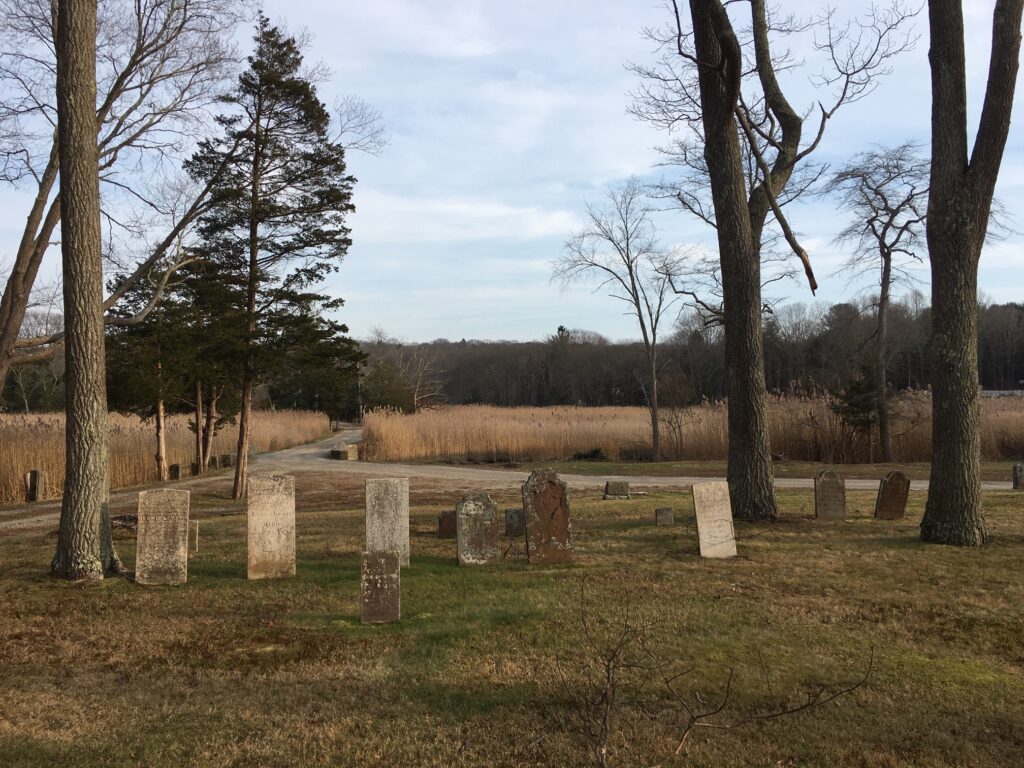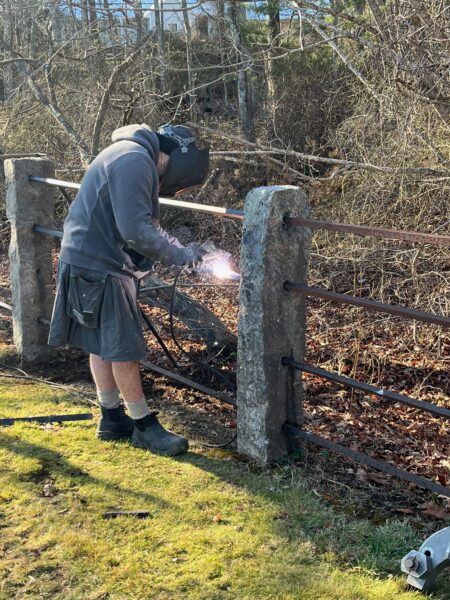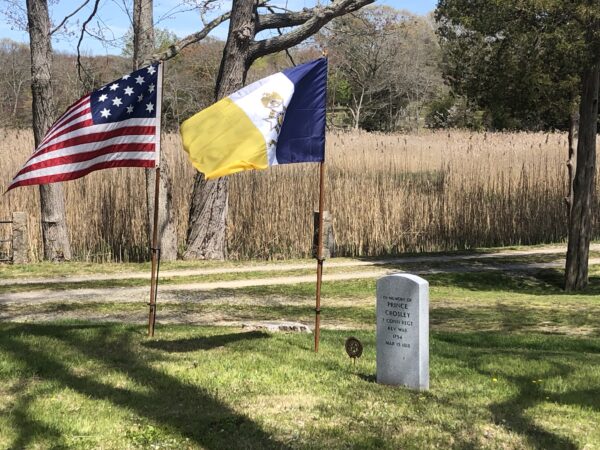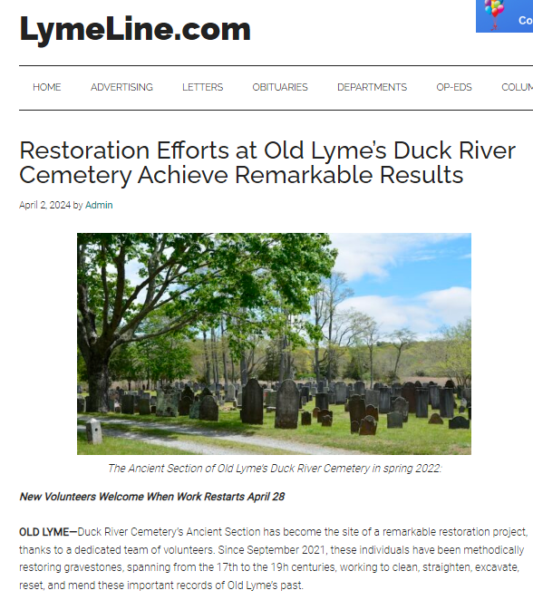STORIES IN STONE
African American Burials at Duck River
Between 1670 and 1820 more than 200 African Americans and Native Americans lived enslaved or indentured in the Lyme region. Nine gravestones standing in a line at the rear of the Duck River Cemetery’s earliest section, behind the graves of the town’s white residents, commemorate African Americans. Eight of those commemorated had labored for decades in servitude. A seven-year-old child and a 27-year-old young woman were not enslaved.
The African-descended adults had all been freed at the time of their deaths, and six, from two unrelated families, had taken, or been assigned, the name Freeman to signal their changed status. No one knows who installed the grave markers, but several were likely placed by descendants of the former slaves’ owners.
African Americans buried at Duck River are Lewis Lewia, his wife Margaret Crosley Lewia, their daughter Eunice Lewia, and their grandson John Henry Lewia. Adjacent to the Lewia family’s graves, markers commemorate Jenny Freeman and her children Pompey Freeman, Prince Freeman, and Nancy Freeman. A short distance away are grave markers for Katherine Freeman and her son Salem Freeman.
Outside the Duck River Cemetery’s gates, along Lyme Street, and at the Sill Lane green, Witness Stones honor the lives and contributions of African Americans who lived in bondage in the community.
— Carolyn Wakeman
Gravestones in Duck River Cemetery have stories to tell about the lives of those who passed before us in the Lyme region and the events that shaped the development of a Connecticut town, distinguished by its prominent lawyers and ministers, its shipbuilding and maritime trade, its architecture and scenic landscape, and its contributions to education, conservation, and the arts.





